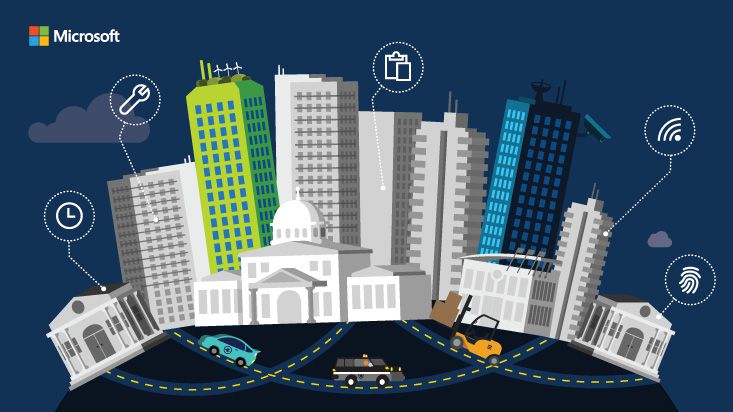Creating smarter cities with IoT
There’s no question that the Internet of Things (IoT) is here to stay. As more sensors are added to everything from vehicles to buildings to street lights, the number of “connected things” in use is expected to hit nearly 5 billion by the end of this year, according to the analyst firm Gartner. And by 2020, that number will escalate to 25 billion.
The ability to collect information from sensors holds tremendous promise for governments of all sizes. By equipping their assets with sensors and connecting these sensors to the cloud, governments can tap into continuous information streams that help them increase efficiency and reduce costs, make better-informed decisions, and improve citizen services in ways never before imagined. In a nutshell, they can create smarter, safer, and more sustainable cities.
When you’re analyzing information nonstop, the volume of information allows you to predict behaviors. And that’s the ability that IoT provides. By understanding the behavior of people and things on a very detailed level, governments can repair vehicles, bridges, roads, and other types of infrastructure before they break down. They can better understand traffic patterns to improve transportation flows. And they can conserve valuable resources such as water and energy. Consider a few examples:
- Predictive maintenance: ThyssenKrupp Elevator, one of the world’s leading elevator manufacturers, connected its elevators to the cloud, gathering data from sensors and systems to better understand when and why its elevators break down. By analyzing information ranging from motor temperature to cab speed to door functioning, the company can now repair its elevators before they break down, dramatically increasing their reliability.
- Improved transportation: Autolib’, an electric-car-sharing program established by the city of Paris and 63 surrounding municipalities, wanted to ease traffic congestion and provide more flexible transportation options for 8 million people who live in the region. By connecting hundreds of handheld devices, more than 4,300 charging stations, 850 registration kiosks, and 2,300 cars, Autolib’ is gaining insights that allow it to predict customer behavior and optimize car utilization. At the same time, it is personalizing the driving experience by presetting the driver’s preferred temperature and radio stations before he or she climbs into the car.
- Resource management: The Monterey Regional Water Pollution Control Agency, which manages a wastewater treatment plant in California, is working to optimize the distribution of reclaimed water to farmers and everyday users in a way that reduces electricity use. To do that, the agency is outfitting its facilities with connected sensors and transforming the data into insights that help it to move its water supply in a way that meets user demand while using less energy.
As these examples illustrate, IoT can transform government in powerful ways. To help our customers more easily deploy IoT solutions, we recently launched the Azure IoT Suite, a cloud-based offering with preconfigured solutions that enable organizations to capture and analyze untapped data. By launching this suite, our goal is to help our customers thrive in this new era of IoT by delivering open, scalable platforms and services that governments of all sizes can use to create new value, right now.
The new era of IoT is here. And as governments embrace it, they will transform their communities into truly smart cities that enrich citizen lives.
To learn more, please watch our short video summarizing the Microsoft vision for IoT.





